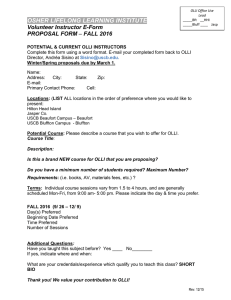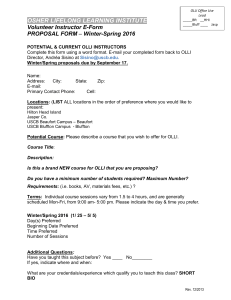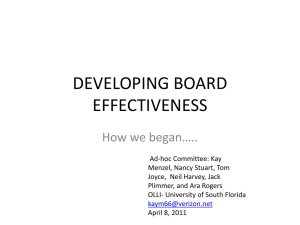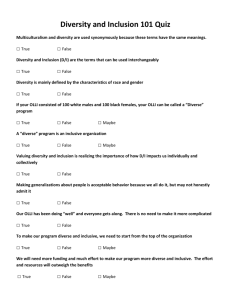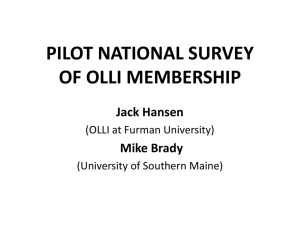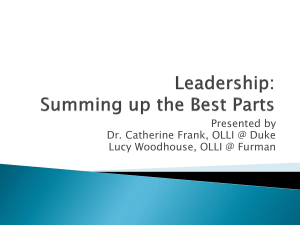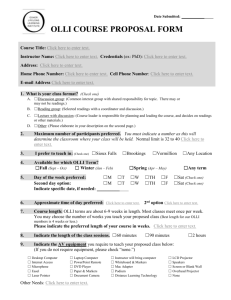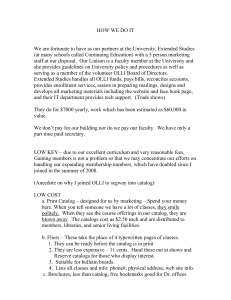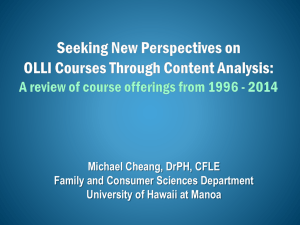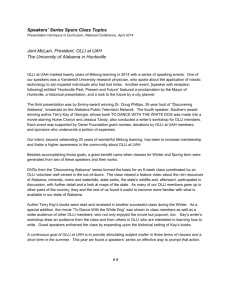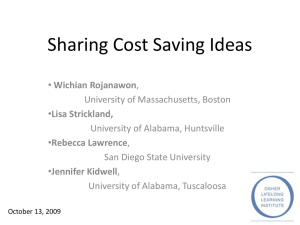OLLI Research Reflections Cheang Sheeran
advertisement
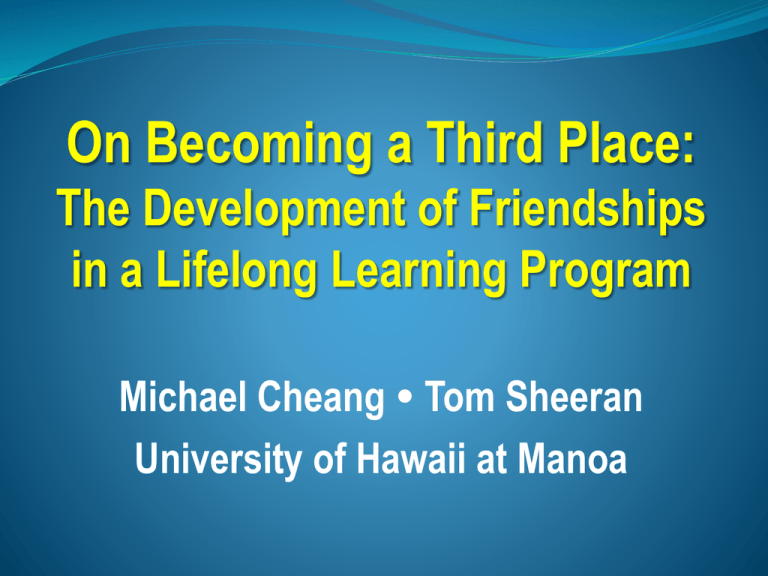
On Becoming a Third Place: The Development of Friendships in a Lifelong Learning Program Michael Cheang Tom Sheeran University of Hawaii at Manoa Acknowledgement and Thanks to: Becky Goodman Director, OLLI University of Hawaii at Manoa Urban sociologist Ray Oldenburg (1989) defines a third place: “as a place of refuge other than the home or workplace… …where people can regularly visit and commune with friends, neighbors, coworkers, and even strangers.” In modern suburban societies time is primarily spent in isolated first (home) and second (work) places. In contrast, third places offer a neutral public space for a community to connect and establish bonds. Third places "host the regular, voluntary, informal, and happily anticipated gatherings of individuals beyond the realms of home and work.” Series of classes at OLLI at the University of Hawaii that seem to generate likeness of a Third Place: • Culinary Tours • Culinary Cinema Culinary Tours 1. Latin America – Mexico, Peru, Chile, Brazil 2. Foods of the Americas – NW Coast, Peru, NE Woodlands, Great Plains/SW, Mexico 3. World of Noodles Slide Lecture followed by meal Participants freely began to pitch in Culinary Cinema • Food-themed films • Classroom film showing and discussion • Shift to local restaurant for dinner • Menu usually related to theme of the film Methodology Qualitative Study, Case Study Institutional Review Board approval Call for participation Data collection techniques: a. Participant observation over 7 years b. 12 individuals responded, 3 focus group sessions c. Paper survey Confidants Close Friends Friends Acquaintances Strangers Factors affecting progression and intensity of relationship development Program Factors: Personal Factors: 1. Frequency of meeting 1. Marital status 2. Size of class 2. Living situation 3. Location & ambience 3. Availability of 4. Instructor personality transportation 4. Personality 5. Class design, content 6. Opportunities for interaction during and after class What role, place OLLI has in your life now? “Intellectual stimulation; fresh, diverse ideas” “Wonderful source of friends, vital social link” “Some have become good friends” “Encourages, motivates one to keep learning and developing in new directions” “Gives reasons to get out of the house” “Connects me to a learning community” “Being a part of a community of learners, friends” Example of a response from an “Independent” “Don’t know if it is OLLI’s job to foster personal connections. I see them as teachers of a topic that interests me” Responses from the “Sociables” “Shared new perspectives” “Opened knowledge to new ideas” “Provided opportunities for contact with people” “Understanding people” Examples from the “Friends” “Have become close friends” “Life long friends” “Closeness of friendships has increased” “Value new friends more” “Relationship deepened” “From superficial to a more profound and significant insight... Enhance and cement friendships, like family” Things that “Friends” now do… 1. Plan to take same classes at OLLI 2. Go out to have meals together 3. Celebrate special events together (birthdays, Thanksgiving, Christmas) 1. Provide transportation to those who do not drive 2. Travel together 3. Help one another in times of need and in emergencies Dimensions of the OLLI experience Educational, intellectual and creative OLLI Participant Social and emotional Psychological Elements of Play Lessons Learned and Practice Implications 1. Third places are locales that provide opportunities for human interactions for individuals with similar likes and dislikes to gather 2. Development of social network and social support 3. Loneliness and well-being in later years 4. OLLI can be a third place Selected References Aday, R. H.; Kehoe, G. C.; & Farney, L. A. (2006). Impact of Senior Center Friendships on Aging Women Who Live Alone. Journal of Women & Aging, 18(1), 2006, 57-73. Hooyman , N. R. Kiyak , H. A. (2002). Social gerontology: A multidisciplinary perspective. Boston: Allyn and Bacon. Oldenburg, R. (1989). The Great Good Place: Cafes, Coffee Shops, Community Centers, Beauty Parlors, General Stores, Bars, Hangouts, and How They Get You Through the Day. New York: Paragon House. Rowe , J. W. & Kahn , R. L. (1998). Successful aging. New York: Pantheon Books. Seeman , T. E. (2000). Health promoting effects of friends and family on health outcomes in older adults. American Journal of Health Promotion, 14, 362-370. Stevens , N. & van Tilburg , T. (2000). Stimulating friendship in later life: A strategy for reducing loneliness among older women. Educational Gerontology, 26, 15-35.
